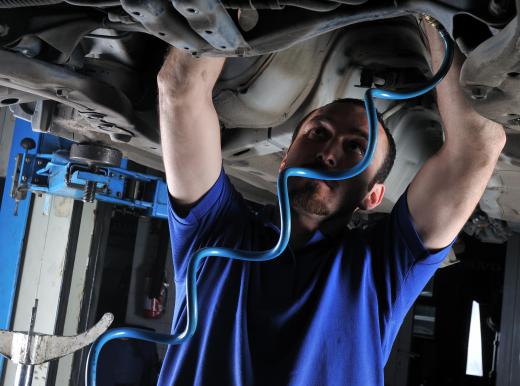An impact socket is a tool that can be used to loosen or tighten a fastener. The purpose of impact sockets is to withstand the force applied by impact tools, which can cause standard sockets to shatter. To achieve this purpose, an impact socket typically will be made out of a relatively soft steel and have a black oxide or plastic coating instead of a chrome finish. This can allow impact sockets to be used in conjunction with either hand ratchets or impact tools, though many people own sets of both and use each type only for its intended purpose.
Sockets are interchangeable tools that can allow a single wrench, impact driver or breaker bar to work with a large number of fastener sizes. Wrenches with a single female socket have been around for hundreds of years, but the first tool that allowed several sockets to be attached to a single driver was invented in 1863. The impact socket arrived later, with the introduction of electric and pneumatic power tools.

There are two main differences between standard and impact sockets, which are designed to offer improved safety during use. The first is the material from which the sockets are constructed. Most standard sockets are constructed of steel that is very strong and resists deformation during use. This type of steel is also very brittle, so when it does break, it tends to shatter. To avoid potential injuries from flying shards, impact sockets tend to be made of softer steel that will crack or deform rather than breaking apart.
The other main difference between a standard socket and an impact socket is the finish. To reduce the potential for rust and create a visually attractive finish, many sockets are plated with chrome. When submitted to impact forces, this chrome can chip and fly off. These shards of plating material are less likely to cause injury than broken socket pieces, but rust might set in after the plating is gone. Impact sockets receive the same type of rust protection from coatings of substances such as black oxide or plastic, which are less likely to splinter and chip than chrome.
Many tools are designed specifically for use with impact sockets. Both electric and pneumatic versions of impact wrenches and air guns can provide enough torque that an impact socket should be used with them to avoid potential injury. Impact sockets also can be used with manual tools as well, such as ratchets and breaker bars. If there is any concern that the level of torque being applied might break the socket, it can be safer to use an impact socket than to use a standard one.
